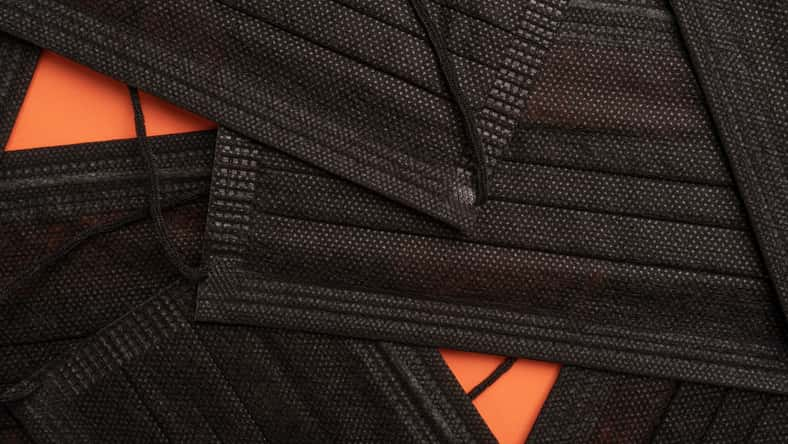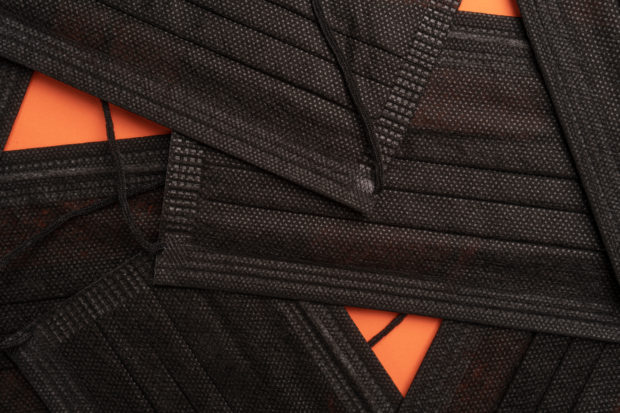Researchers Discovered That Etching Grooves Onto N95 Facemasks Helps Prevent The Spread Of Disease

During the COVID-19 pandemic, the most effective way of preventing the spread of disease– aside from isolating at home– was using personal protective equipment (PPE) while interacting with others in public spaces. Most notably, PPE included eye protection, gloves, face shields, and face masks.
Although, N95 respirator masks became the go-to PPE choice used by the public and recommended by both federal and global health agencies.
N95s are made of electrostatic non-woven polypropylene fiber and sometimes feature an optional exhalation valve– which “reduces exhalation resistance and makes it easier to breathe (exhale),” according to the CDC.
And now, even as we move toward a post-COVID era, many community members are still choosing to wear masks in public.
Some opt to mask more during the winter months when waves of not just COVID-19 but also the flu and RSV are more significant.
Others are masking year-round following a heightened fear of germ transmission in high-contact public places. Professionals in a wide range of workplaces are still required to “mask up,” too.
Just recently, though, a new study conducted by researchers at the Korea Institute of Science and Technology has discovered a way to make N95 face masks even more effective at preventing the spread of disease.
Past research has shown that throughout several hours of wear, N95 face masks actually become less effective.
This is due to a build-up of moisture created by the breath of wearers, which makes it more difficult for air to pass through and ultimately increases the amount of pressure inside the face mask.

Pavel Iarunichev – stock.adobe.com – illustrative purposes only
This increased pressure then forces exhaled air to escape from the sides of the mask and can potentially release more unfiltered airborne particles into the local environment.
Additionally, aside from raising the risk of disease spread, moisture build-up also makes mask-wearing much less comfortable– which could push community members to take them off altogether.
So, the research team sought to find a way to expel excess N95 moisture without transmitting viruses to the outside environment.
And ultimately, they determined that etching grooves onto the surface of N95 masks would help make the PPE better at repelling water droplets– hence decreasing the spread of disease.
To do this, the researchers utilized a technique known as plasma etching. Plasma etching essentially blasts pressurized gas at a material via a very high force– and this force ultimately creates tiny grooves in the material.
This technique is most commonly used to create electronic devices, but the team realized it would be extremely beneficial to the improvement of PPE. The result is a water-repellent material since the grooves are too tiny to hold water molecules. Instead, the droplets are forced to rest on pockets of air.
So, the researchers applied the same plasma etching technology to the front and back of N95 masks.
And afterward, the newly-added grooves were found to protect the front of the masks from any mist, rain, and other liquids.
The inside of the masks, too, actually wicked away moisture created by wearers’ breath– preventing build-up inside the masks.
The team also decided to test the possibility of using this plasma etching technology in a mass-production environment by producing 100,000 etched masks.
The researchers claimed they were able to complete this feat in “a reasonable amount of time” and believe that the next step is applying this technology to N95 masks sold commercially.
This could have significant implications for everyday consumers who are hoping to protect themselves from disease in highly populated places– such as offices, airports, sports facilities, and more– as well as healthcare professionals who are facing countless airborne diseases daily.
To read the study’s complete findings, which have since been published in PNAS, visit the link here.
If true crime defines your free time, this is for you: join Chip Chick’s True Crime Tribe
Sign up for Chip Chick’s newsletter and get stories like this delivered to your inbox.
More About:Science